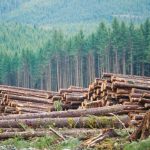 Deforestation is one of those environmental issues that seldom seems to get the attention it deserves. Its importance to both biodiversity discussions and climate change seems beyond dispute, yet in both areas, other topics often seem to secure greater levels of public attention.
Deforestation is one of those environmental issues that seldom seems to get the attention it deserves. Its importance to both biodiversity discussions and climate change seems beyond dispute, yet in both areas, other topics often seem to secure greater levels of public attention.
I’ve written previously about a number of projects that are taking innovative approaches to improving our ability to protect the forests of the world, whether the citizen science of Geo-Wiki or the more big data approach taken by Orbital Insight.
There seems a constant battle between protecting forests whilst also making the best use of them as a natural resource. It’s a battle that Finnish forest planners are turning to digital technology to help them solve.
Sustainable utilization
As part of the National Forest Strategy 2050, the country aims to increase logging by over ten million cubic meters in the next decade. To help manage this, they’ve created a number of digital tools. One such tool, called Your Own Decision Aid or Yoda for short, helps officials to evaluate different planning projects in one place.
“Yoda has a visual user interface and is suitable for various different uses. That means people from different fields of work, not only forestry, can use it,” the team say.
Data is collated and gathered together in Yoda for particular uses, whether it’s evaluating peatland restoration or sustainable logging practices. It’s part of a wider EU funder project called LIFEPeatLandUse.
“Yoda will be a helpful tool for decision-makers from the grassroots level to executive seats in the European Union”, the developers say.
Forest visualiztion
The team have also developed a tool for visualizing the forest, called Forest Indicator. The web-based tool aims to take into account how the use of the forest affects the whole ecosystem, not just the forest itself.
The application, which is still in development, will be the culmination of a three-year research project and is designed for anyone with an interest in forest planning.
Users will be able to examine in detail any region of their choosing, with each region utilizing a range of indicators that are based upon the forestry scenario models developed by the agency. The aim is to help users answer various questions surrounding sustainable forest utilization.
“The indicator has several options and colors for visualizing data. The user can choose for example whether they want to see the indicators as a bar graph or a clock face, where the hand shows how far a forest’s diversity is from the maximum,” the team say.
Whilst neither tool is designed to fully digitize the work of forest planning, they will nonetheless increase the support given to forest planners’, owners’ and other decision-makers.